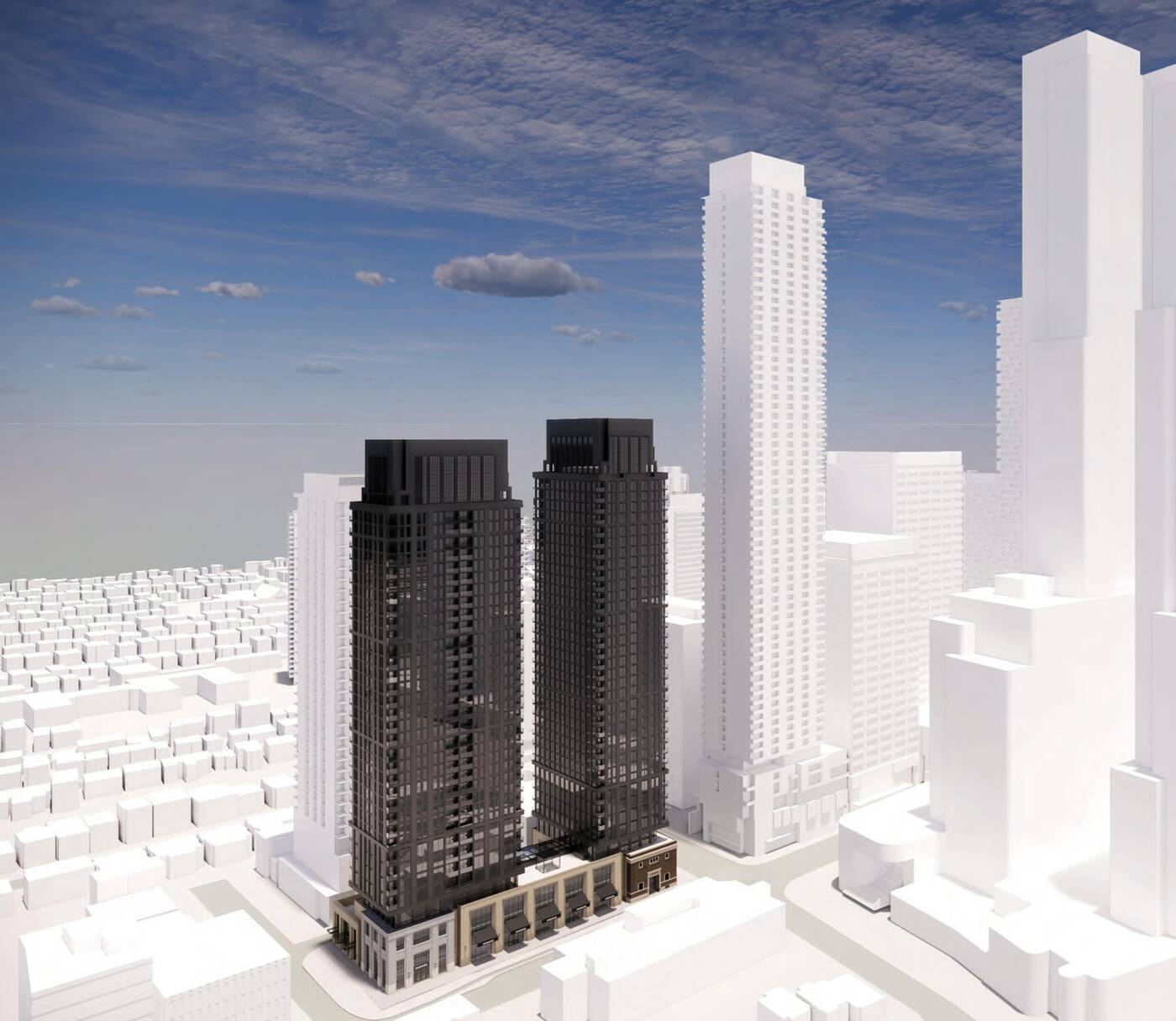Article content
Canada’s housing frenzy has made property owners a lot of money. But it’s also made the cost of market entry much higher for first-time real estate investors.
Down-payment cash doesn’t go nearly as far as it used to

Canada’s housing frenzy has made property owners a lot of money. But it’s also made the cost of market entry much higher for first-time real estate investors.
Ten years ago, a $100,000 investment would have been enough for down payments on two downtown Montreal condos. Five years ago, it would have been more than enough to put down on a single-family investment property in Hamilton or Ottawa.
But with historically low mortgage rates causing price explosions in virtually every Canadian city, $100,000 doesn’t get you as much house as it used to — in part because investors are required to put at least 20 per cent down on an investment property.
So what can investors do with $100,000 at their disposal? Here are four suggestions.
Having only $100,000 won’t get you far in Canada’s most in-demand rental markets. With the average condo in the greater Toronto area selling for just over $688,000 in August, according to Toronto Regional Real Estate Board data, a 20 per cent down payment exceeds $137,000.
But property ownership is still the chosen way to invest in real estate, says Brett Turner, Calgary-based investor and owner of Redline Real Estate Group.
“If you’re buying an income property, you’re going to get an opportunity to take advantage of four ways to make money with your investment,” he says.
Those include passive appreciation, increased equity through renovations, mortgage paydowns that increase your net worth and positive cash flow.
You don’t need to own property in a 24-hour city to generate solid returns. It’s all about balancing the cost of your property with the rent it generates, its realistic potential to command higher rents in the future and the costs associated with having it managed for you by a local expert.
A $100,000 down payment should be enough to get you into an income-generating property in Calgary, Saskatoon, Regina, Winnipeg, Fredericton or Charlottetown. And there are plenty of other affordable cities in Canada that are bursting with students, and health-care and government workers who aren’t yet ready to buy their own homes.
Turner’s advice: Try to buy at a price below the local average and keep your first go-round as a landlord simple.
“You don’t want to purchase a property that is going to require you as an investor to solve a lot of problems,” he says. “The newer a property you can buy, where you shouldn’t have to steer a large renovation — that kind of thing is a great approach.”
Maybe you want to profit off both the long- and short-term potential of real estate but don’t want the hassle of being a landlord. You can channel some, or all, of your $100,000 into real estate investment trusts (REITs) instead.
“I think they’re very useful for income-oriented investors, especially in this environment, where interest rates are low and dividend rates are stable,” says Ethan Astaneh, financial advisor at Nicola Wealth in Vancouver.
Canada’s shortage of properties to buy will continue to put pressure on the residential rental market — and rents themselves — which is music to the REIT investor’s ear.
But a diversified REIT play will also require you to get some exposure to non-residential asset classes like industrial and office properties. Dabbling in these areas can be daunting for new REIT investors.
“Individuals who have professional advice will be getting recommendations,” Astaneh says. “Individuals who don’t will have to piece it together themselves.”
When choosing a REIT, he says it’s critical to understand each asset class’s current place in the market and investigate which REITs have performed well over the long term. Plus, you need to investigate the leadership team.
“So much of a REIT’s productivity actually relies on the skill of the management team,” says Astaneh. “That’s really what you’re buying.”
Similar to REITs are offerings called “private pools.” They let investors put their funds together as part of a limited partnership that owns property directly.
As an investor, you and the other owners are in charge of the property, but management responsibilities are farmed out.
As with REITs, Astaneh says, the liquidity level of a private pool is higher than with owning actual property; although he adds some pools require six-months’ notice if an investor decides to pull out.
But, whereas REIT shares can be purchased for a few hundred dollars, the cost to access a private pool can be steep. Your $100,000 may not be enough.
Another way to generate solid returns with $100,000 is by lending it to other real estate investors.
There’s no shortage of house flippers needing funds for six-month reno projects, homeowners looking to secure second or third mortgages or novice developers assembling capital for larger-scale land deals.
Putting these loans together will require help. Mark Yamada, president and CEO of PUR Investing in Toronto, says a good real estate lawyer is a must, not only for protecting you as a lender but because they can expose you to a large network of clients who could become future borrowers.
A mortgage broker who specializes in private money and has experience with these loans can also be an invaluable information source, although you might have to cut them in on the returns.
“You can charge double-digit, short-term loan rates,” Yamada says. “If somebody had $100,000 and wanted to get participation in the market, that’s certainly one way to do it.”
This article provides information only and should not be construed as advice. It is provided without warranty of any kind.


Digital twin platform Matterport has agreed to be acquired by one of its customers, Costar, in a cash-and-stock deal of $5.50 per share that gives it an enterprise valuation of about $1.6 billion. Matterport’s tech helps companies create digital replicas of physical spaces.
Costar’s offer represents a premium of a whopping 212% over Matterport’s last closing share price before the deal was announced on April 22.
The deal looks like a fortunate turn of events for Matterport, whose shares had been trading below the $5 mark since August 2022 as the company struggled to meet investors’ expectations for subscriber growth amid a sluggish real estate market and a wider macroeconomic slowdown. Matterport’s stock was trading below $2 per share before the transaction was disclosed.
The company has been trying to improve its profitability over the past year, too, according to its 2023 financial statements. However, investors haven’t been happy with the company, whose shares have been struggling since it went public via a SPAC deal in 2021, which Bloomberg reported valued Matterport at around $2.9 billion.
Matterport’s shares were trading at $4.76 before the bell on Tuesday — slightly below the $5.50 deal price, which indicates investors may be wary of the deal getting blocked by regulators, or they may be hedging their bets to account for a possible decline in Costar’s stock, since the deal has a share-based component, too. Costar’s shares, however, are up slightly since the announcement, indicating that its investors are happy with the potential benefits of the deal.
Matterport quickly rose to prominence from its start in 2011, making 3D imaging cameras, spawning out of the Microsoft Kinect hacker scene and going on to join Y Combinator’s Winter 2012 batch. Its services gained significant traction in the real estate space despite competition from alternatives such as Cupix, Giraffe360 and Zillow 3D Home.
Digital twin technology has applications in construction tech and insurtech, but demand from real estate players is particularly salient, as the pandemic accelerated the switch from in-person viewings to virtual tours, both for commercial and for residential properties.
Early-mover advantage aside, the company’s later decisions likely played an equally important role as the market evolved. It diversified into helping clients create virtual tours even with smartphones. And the addition of AI with its in-house solution, Cortex, added more differentiation to its offering, leveraging its data to generate 3D digital twins supporting additional labels such as property dimensions.
Matterport’s leadership changed over the years. Its current CEO, former eBay chief product officer RJ Pittman, took the reins in 2018 — but its fundraising trajectory was fairly smooth. Over its first decade, it raised successive rounds of funding for a total of $409 million, followed by its public debut in 2021.
“Costar Group and Matterport have nearly identical mission statements of digitizing the world’s real estate,” Costar’s founder and CEO, Andy Florance, said in a statement.
CoStar, which has a market cap of $34.84 billion, is a real estate heavyweight that operates marketplaces such as Apartments.com, Homes.com and LoopNet (for commercial real estate). This gives it direct insights into the value that Matterport can add for its end users.
In March 2024, Costar wrote in a press release, “there were over 7.4 million views of Matterport 3D Tours on Apartments.com, with consumers spending 20% more time viewing an apartment listing when Matterports were available.” The company now plans to incorporate Matterport’s virtual tours (“Matterports”) on Homes.com.
Taking to the stage at a real estate event shortly after the announcement, Florance reportedly said that allowing home buyers to view properties with their own furniture, for instance, will allow agents to provide more value and promote their brands.
It will be worth tracking what happens to Matterport’s activities beyond real estate, such as its partnership with Facebook to help researchers train robots in virtual environments.
The deal is subject to regulatory approvals, but this is more than an asterisk: In 2020, Costar’s attempt to acquire RentPath was derailed by an FTC antitrust lawsuit, and RentPath was instead bought by Redfin in 2021.


Valuations for Canada’s office real estate have taken longer to adjust than properties in other advanced economies.Jeff McIntosh/The Canadian Press
Sign up for the Globe Advisor weekly newsletter for professional financial advisors on our sign-up page. Get exclusive investment industry news and insights, the week’s top headlines, and what you and your clients need to know. For more from Globe Advisor, visit our homepage.
As the U.S. economy has pulled meaningfully ahead of Canada’s, so too has its private commercial real estate sector, which is adjusting more positively to the post-pandemic reality.
That’s particularly evident in both countries’ privately held office property markets. While the U.S.’s is well down the path of transforming, demolishing or otherwise ridding itself of empty office space, Canada’s has practically frozen in place following a wave of markdowns in 2023. That has made valuation assessments next to impossible.
“There’s a big dichotomy, and the Canadian market so far has not corrected,” says Victor Kuntzevitsky, portfolio manager with Stonehaven Private Counsel at Wellington-Altus Private Counsel Inc. in Aurora, Ont., which holds private real estate assets in credit and equity vehicles in both Canada and the U.S.
It’s no secret that last year was a difficult period for owners of Canadian private real estate, with many pension fund managers losing money as high interest rates drove up borrowing costs, inflation increased operating costs and vacancy rates remained high or even climbed.
The Caisse de dépôt et placement du Québec saw its real estate portfolio decline 6.2 per cent in 2023. The Ontario Teachers’ Pension Plan experienced a 5.9-per-cent loss in its real estate book, while markdowns on commercial properties owned by the Ontario Municipal Employees Retirement System (OMERS) resulted in its real estate portfolio dropping by 7.2 per cent.
However, there are pockets of strength investors can look to, says Colin Lynch, managing director and head of alternative investments at TD Asset Management Inc. These include multi-family residential and open-air retail centres, as well as industrial properties, which have been steady performers following strong gains through the pandemic.
It’s a view that dovetails with other analyses of the Canadian market. BMO Global Asset Management’s latest commercial property outlook notes that the industrial and multi-family segments remain strong due to high investor demand and tight supply.
“Office remains the asset class of the greatest near-term concern and focus,” the BMO GAM report states, estimating “a timeline for a return to ‘normal’ of a least five years.”
Mr. Lynch says while that timeframe could be accurate, private real estate investors need to evaluate opportunities on a city-by-city basis.
“Every city is very different. In fact, the smaller the city, the better the office property market has generally performed because commute times are much better, so in-office presence is much higher,” he says.
He points to cities such as Winnipeg, Regina and Saskatoon, where commute times can be 10 minutes and office workers are in four days a week on average.
However, there’s also room for more bad news, with some property owners struggling to refinance expensive debt in a higher-for-longer rate environment that could force firesales for lower-quality buildings.
The U.S. and other advanced real estate markets, such as the U.K., are “quarters ahead” of where the Canadian office market is in terms of valuation adjustments, Mr. Lynch says. A major reason is much of Canada’s commercial office real estate is owned by a relatively small group of large investment funds.
“Peak to trough in the U.K., for example, declines were about 20 per cent,” he says, noting that Canada’s market hasn’t corrected to that extent, but it is catching up.
Mr. Kuntzevitsky says these private fund assets are valued based on activity.
“The U.S. market is deeper, there’s more activity within it compared to Canada,” he says. “The auditors I speak to who value these funds are saying, ‘Listen, if there’s no activity in the marketplace, we’re just making assumptions.’”
Nicolas Schulman, senior wealth advisor and portfolio manager with the Schulman Group Family Wealth Management at National Bank Financial Wealth Management in Montreal, holds private real estate funds for clients and says he’s preparing to evaluate new investments in the Canadian space later in 2024.
“We don’t think the recovery would take a full five-year window, but we do believe it’s going to take a bit more time. Our conviction is, we want to start looking at the sector toward the end of this year,” Mr. Schulman says.
Mr. Kuntzevitsky says he’s been allocating any excess cash to the U.S. market in both private and publicly listed vehicles.
“The opportunity here is that you redeem your open-ended private [real estate investment trusts (REITs) in Canada] and reallocate the money to the U.S., where the private market reflects [net asset values] based on recent activity, or you can invest in publicly listed REITs,” he says.
Still, Mr. Kuntzevitsky is watching developments closer to home for evidence the market is turning.
In February, the Canada Pension Plan Investment Board and Oxford Properties Group Inc. struck a deal to sell two downtown Vancouver office buildings for about $300-million to Germany’s Deka Group – about 14 per cent less than they were targeting.
“Hopefully, that will activate the market,” Mr. Kuntzevitsky says. “But so far, we haven’t seen that yet.”
For more from Globe Advisor, visit our homepage.
A large condo complex proposed in the increasingly condo-packed Yonge and Eglinton neighbourhood is planning to go much taller.
Developer Madison Group has filed plans to increase the height of its planned two-tower condo complex at 50 Eglinton Ave. W., from previously approved heights of 33 and 35 storeys, respectively, to a significantly taller plan calling for 46- and 58-storey towers.
The dual skyscrapers will rise from a podium featuring restored facades of a heritage-designed Toronto Hydro substation building.
As of 2024, plans for high-rise development at this site have been evolving for over a dozen years, first as two separate projects before being folded into one. The height sought for this site has almost doubled in the years since first proposed, and it shouldn’t come as a huge surprise for anyone tracking development in this part of the city.


Early 2024 design for 50 Eglinton West before current height increase request.
Building on a 2023 approval for towers of 33 and 35 storeys, the developer filed an updated application at the start of 2024 seeking a slight height increase to 35 and 37 storeys.
Only a few months later, the latest update submitted with city planners this April reflects the changing landscape in the surrounding midtown area, where tower heights and density allotments have skyrocketed in recent years in advance of the Eglinton Crosstown LRT.


April 2024 vision for 50 Eglinton Avenue West.
The current design from Audax Architecture is a vertical extrusion of the previous plan that maintains all details, including stepbacks and material details.
That updated design introduced in January responds to an agreement that allows the developer to incorporate office space replacement required under the neighbourhood plan to a nearby development site at 90-110 Eglinton East.
According to a letter filed with the City, “As a result of the removal of the on-site office replacement, which altered the design and size of the podium, and to improve the heritage preservation approach to the former Toronto Hydro substation building… Madison engaged Audax Architecture and Turner Fleischer Architects to reimagine the architectural style and expression of the project.”
A total of 1,206 condominium units are proposed in the current version of the plan, with over 98 per cent of the total floor space allocated to residential space. Of that total, 553 units are planned for the shorter west tower, with 653 in the taller east tower.
A sizeable retail component of over 1,300 square metres would animate the base of the complex at Duplex and Eglinton.
The complex would be served by a three-level underground parking garage housing 216 spots for residents and visitors. Most residents would be expected to make use of the Eglinton Line 1 and future Line 5 stations across the street to the southeast for longer-haul commutes.
Audax Architecture/Turner Fleischer Architects
Honda to build electric vehicles and battery plant in Ontario, sources say – Global News




Will We Know if TRAPPIST-1e has Life? – Universe Today




See how chicken farmers are trying to stop the spread of bird flu – Fox 46 Charlotte




Simcoe-Muskoka health unit urges residents to get immunized




Own a cottage or investment property? Here's how to navigate the new capital gains tax changes – The Globe and Mail




Lyrid meteor shower 2024: How to see a stunning fireball tonight – BBC Science Focus
Freeland defends budget measures, as premiers push back on federal involvement – CBC News




Osoyoos commuters invited to celebrate Earth Day with the Leg Day challenge – Oliver/Osoyoos News – Castanet.net